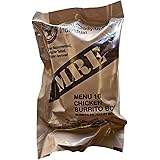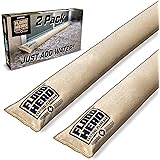Emergency Food Storage Solutions
Types of Emergency Food
When thinking about emergency food storage solutions, you need to know the different types of foods you can store. Non-perishable items are your best bet—the ones that last a long time and require minimal effort to prepare. Canned goods, dried beans, and freeze-dried foods are excellent options. I’ve always kept a stash of canned beans and vegetables in my pantry just for this reason.
Another contender in the emergency food category is MREs, or Meals Ready to Eat. These are typically used by the military but have become available for public consumption. They don’t require refrigeration and are packed with nutrients. When natural disasters hit, these meals can be a lifesaver.
Lastly, consider stockpiling grains like rice and pasta. They have a long shelf life and can be used to spruce up any meal. I usually store my grains in airtight containers to keep them fresh for extended periods.
How Much Food to Store
Determining how much food to store can be tricky. The general rule of thumb is to have at least a week’s worth of food for each person in your household. But honestly, aiming for a month’s supply can give you and your family peace of mind. It’s better to have a bit more than just enough.
Make an inventory list and regularly update it. I’ve found that keeping an inventory helps me track what I have and what I need to replenish. This way, you avoid running into expiration date issues and ensure you’re well-stocked.
If space is a constraint, utilize every nook and cranny. Under-the-bed storage bins are a superb choice for canned goods and smaller items. I’ve also used the space above kitchen cabinets to store less frequently used but essential items.
Budgeting for Long-Term Storage
Food storage can be an investment, but it doesn’t have to break the bank. Start small by adding a few extra items to your regular grocery shopping list. Buying in bulk can also save you money in the long run. Just make sure you have a proper place to store these bulk items.
Coupons and sales are another great way to cut costs. I always keep an eye out for deals on canned goods and grains. Sometimes, shopping at warehouse clubs can offer significant savings on bulk purchases.
== > What if ... Get a FREE Subscription to PREPARE
Finally, don’t overlook thrift stores or surplus shops. You’d be surprised at the deals you can find if you know where to look. I’ve snagged some genuine bargains on MREs and other emergency supplies at local surplus stores.
Best Practices for Storing Food Long-Term
Proper Storage Containers
Using the right containers is paramount in securing your long-term food storage. Airtight containers, vacuum-sealed bags, and Mylar bags are some excellent options. These containers keep your food fresh by eliminating air and moisture, which are the two main culprits behind food spoilage.
For grains and beans, I prefer to use large, food-grade buckets with airtight lids. These buckets can be found at most home improvement stores and offer ample storage space. Not to mention, they can be stacked to save room.
Another neat trick is to use oxygen absorbers in conjunction with these storage containers. Oxygen absorbers help extend the shelf life of dried foods by removing any residual oxygen. The result? Your food stays fresher for longer.
Labeling and Rotating Stock
Labeling your stored food is an absolute must. Trust me; you don’t want to guess the expiration dates later. I always jot down the packing date and the expected expiration date on every container. This habit helps me keep track of what needs to be used first.
Rotation is another best practice to adhere to. Use the “first in, first out” (FIFO) principle. Whenever you add new items to storage, place them behind the existing stock. This way, you’re always using the oldest items first and avoiding waste.
Additionally, having a tracking sheet can make life easier. I keep a simple spreadsheet that details what I’ve stored, the quantity, and the expiration dates. It helps me stay organized and ensures nothing goes to waste.
Temperature and Humidity Control
Temperature and humidity play a huge role in food preservation. The ideal storage environment is cool, dry, and dark. Excessive heat or humidity can wreak havoc on your stored food. I’ve found that a dedicated pantry or a cool basement works best for me.
Using portable dehumidifiers can also be a game-changer. If your storage area tends to be humid, a dehumidifier can help maintain the right levels of moisture. Just ensure to empty it regularly.
For those in colder climates, be cautious of freezing temperatures. Sometimes, food items can be damaged if they freeze and thaw repeatedly. In my experience, insulating storage bins can help mitigate this issue.
DIY Food Storage for Disasters
Making Homemade Preserves
If you’re into DIY, making your own preserves can be a fun and rewarding activity. Jams, jellies, and pickles are timeless classics that can be stored for extended periods. Canning is a tried-and-true method that I’ve used for years. It’s a fantastic way to preserve the harvest from your backyard garden.
The key to successful canning is sterilization. Ensuring that all your jars and utensils are thoroughly sterilized helps prevent bacterial growth. I always boil my jars for at least 10 minutes before using them.
Another essential tip is to use the right canning method for the type of food you’re preserving. High-acid foods like fruits can be water-bath canned, while low-acid foods like vegetables and meats should be pressure canned for safety.
Dehydrating Food
Dehydration is another stellar method for long-term food storage. A food dehydrator can be a worthy investment if you’re serious about prepping. You can dry fruits, vegetables, and even meats to create lightweight, long-lasting food supplies.
One of my favorite things to dehydrate is fruit slices. They’re delicious, nutritious, and easy to store. Just slice the fruit, lay it on the dehydrator trays, and let the machine do its magic.
When dehydrating meats, it’s crucial to follow proper guidelines to ensure safety. Make sure to marinate the meat properly and dry it at the correct temperature. I’ve made some fantastic beef jerky over the years, and it’s become a staple in my emergency kits.
Vacuum Sealing
Vacuum sealing is a great DIY method to extend the shelf life of your foods. The process involves removing air from the storage bag, which helps to prevent spoilage and freezer burn. For me, a vacuum sealer is a must-have kitchen gadget.
I use vacuum sealing for a variety of items, from meats to vegetables and even leftovers. It’s a versatile method that helps keep food fresher for longer periods.
When using vacuum sealing for long-term storage, pair it with Mylar bags and oxygen absorbers for the best results. This combo creates an ultra-protective environment that can significantly extend the shelf life of your foods.
Protecting Food Supplies Against Spoilage
Using Preservation Techniques
Protecting your food supplies against spoilage is all about using the right preservation techniques. Whether it’s canning, dehydrating, or vacuum sealing, each method has its merits. Knowing what works best for which type of food can save you from a lot of headaches.
I remember when I first started with canning. It seemed daunting, but with a bit of practice, it became second nature. Now, I can make my own jams and store them for months without a hitch.
Dehydrating is also a fantastic way to preserve the bounty of your garden. It reduces the weight and volume of the food, making it easier to store. Plus, it retains most of the nutrients, making your preserved food as healthy as it is convenient.
Keeping Pests at Bay
Pests can be a significant threat to your food supplies. From rodents to insects, these critters can ruin months of preparation and hard work. The first line of defense is proper storage containers. Durable, airtight containers can help prevent pests from getting into your food.
I’ve also found that cleanliness is crucial. Keeping your storage area clean and free from food crumbs can deter pests. Regularly inspect your storage area for any signs of pests and take action immediately if you find any.
Using natural pest repellents like bay leaves or mint can also be effective. I often place bay leaves in my containers of rice and grains—it works like a charm!
Avoiding Moisture and Mold
Moisture and mold are the nemeses of long-term food storage. Keeping these at bay is essential to ensure your food remains safe and edible. Airtight containers and vacuum sealing can significantly reduce moisture levels.
Regularly check your storage area for any signs of mold. It’s better to catch it early before it spreads. A clean, dry environment is essential for keeping mold at bay.
Silica gel packs can also be a game-changer. These little packets absorb moisture and can be placed in storage containers to keep the contents dry. I use them for almost all my dried foods to ensure they stay in top condition.
FAQ
1. How long can emergency food supplies last?
Emergency food supplies can last anywhere from a few months to several years, depending on the type of food and the storage conditions. Canned goods can last up to 5 years, while freeze-dried foods can last even longer, often up to 25 years or more.
2. What types of foods are best for long-term storage?
The best types of foods for long-term storage are non-perishable items such as canned goods, grains, dried beans, and freeze-dried foods. These foods have a long shelf life and require minimal preparation.
3. How should I prepare my storage area?
Ensure your storage area is cool, dry, and dark to extend the shelf life of your food. Use airtight containers, dehumidifiers if necessary, and regularly inspect the area for pests and moisture issues.
4. What are some cost-effective ways to start building my emergency food supply?
Start small by adding a few extra items to your regular grocery shopping list. Buying in bulk, using coupons and sales, and shopping at thrift stores or surplus shops can also help you save money while building your emergency food supply.






